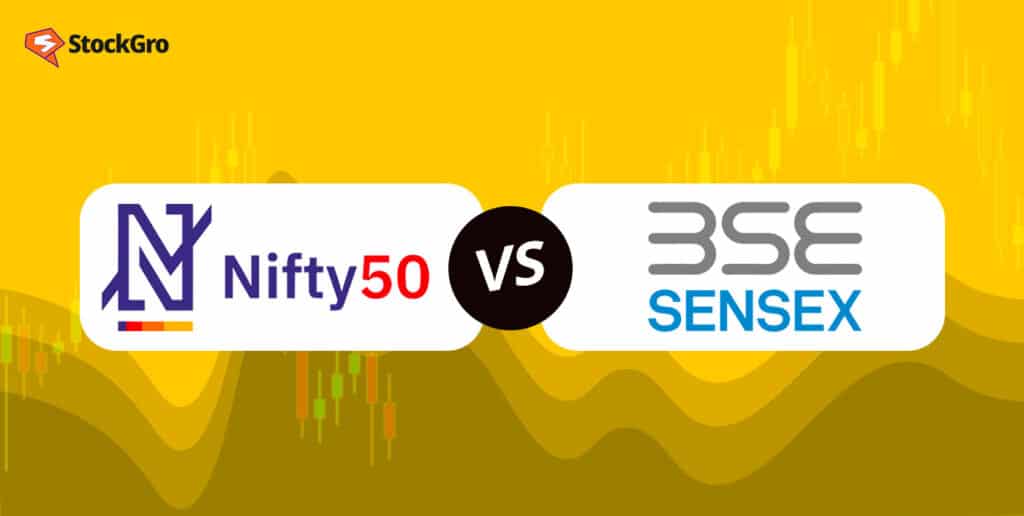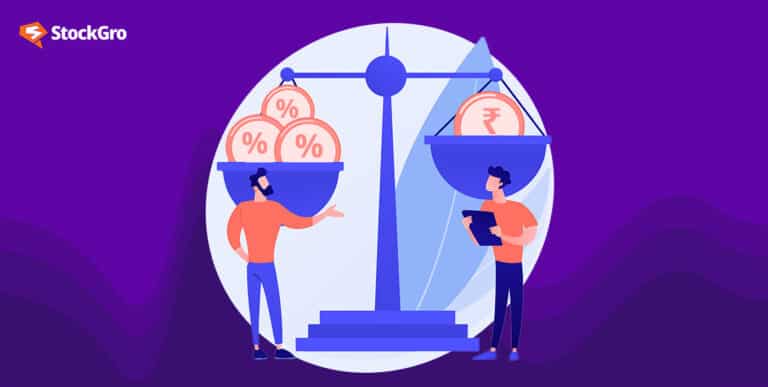
On 28th June 2023, the Indian equity market witnessed a historic moment as both the Nifty and Sensex soared to record-breaking levels. The Nifty index surged by almost 1%, surpassing the 19,000 mark, while the Sensex crossed the monumental milestone of 64,000. But what do these benchmark indices really mean, and how do they differ?
Stock market plays a crucial role in the modern economy. When it comes to investing in stocks, you need to be aware about market indices and to track market performance.
In India, Nifty (National Stock Exchange) and Sensex ( Bombay Stock Exchange) are the two vital stock market indices or exchanges. Both these indices offer valuable insights to traders and investors before making any investment.
What is an Index?
A stock index is a highly curated collection of listed companies based on market capitalisation. The companies included in the index often operate across various economic sectors and industries. The companies listed in a stock index are also established and represent their sector or industry.
As companies in an index represent all key sectors and industries, market participants often regard it as one of the finest tools for evaluating market performance. You can invest in stock indices and businesses through ETFs and mutual fund schemes.
In the Indian stock market, there are two benchmark indices- S&P BSE Sensex and S&P CNX Nifty. Depending on the indices’ performance, the investor can measure the overall market change.
You may also like: How does intraday trading work?
Brief on what is Sensex and nifty
What is Sensex?
The BSE’s index, known as Sensex or the Sensitive Index, represents a diverse sample of publicly traded companies. Examining each firm’s performance individually on the BSE, which currently lists 5,251 companies as of February 2022, would be a challenging task.
BSE utilises Sensex to address this problem. The Sensex index chooses 30 companies as the most alluring, effective, and best for the market. If these businesses aren’t doing well, market trends also fall. But if these 30 businesses outperform, the market trends are positive. Sensex follows certain criteria to select companies to list under it. These are-
- High liquidity
- Industry representation
- Average daily turnover
- Market capitalization
What is Nifty?
Also called the National Stock Exchange Fifty (NSE), Nifty is the benchmark index of the NSE. The index, first released in 1996, is known by traders as CNX Nifty and Nifty 50. The top 50 firms from various sectors and industries listed on the NSE make up the Nifty.
The index covers large-cap corporations, which are often listed on stock exchanges and have a high level of liquidity. These firms account for 70% to 75% of India’s market capitalisation.
Like Sensex, even in Nifty, the market capitalization is initially determined by multiplying equity by the market price. The equity capital in Nifty is multiplied by the price, further with the IWF (Investable Weight Factor), to get the free-float capitalization. Then, Nifty is determined daily by multiplying the base index value of over 1000 by the current market value after dividing it by the base market capital. Criteria to get listed in Nifty are-
- Domicile
- Float adjustment
- Liquidity
How to calculate Sensex and Nifty?
Since we know what exactly Sensex and Nifty are, it is important to know how to calculate each. Let us learn the basics of calculating Sensex and Nifty.
How to calculate Sensex?
The mechanism used by Sensex is identical to the Nifty. The Sensex calculation involves the free-float market capitalization formula. The calculation in the free-float market involves the overall valuation of the company, relying majorly on the outstanding shares held with the public.
The share is multiplied by the price of each share. The only difference in this calculation is that privately-owned shares are not calculated.
So, like the Nifty, this index likewise reflects the entire market value of the 30 members about its base period, which is 1978–1979, similarly.
Also Read: Stock Lending and Borrowing [Explained]
Before computing the Sensex, it is necessary to determine each company’s market capitalization using the formula. Furthermore, one must multiply the calculated market capitalization by a free-float factor to determine the free-floating market capitalization.
Here is the formula-
Sensex formula = (Free float market capitalization of 30 companies / Base market capitalization) * Base value of the Index.
How to calculate Nifty?
The calculation in Nifty involves the free float capitalization-weighted technique for each of the 50 corporations. The Index’s price reflects the aggregate market value of all the equities included in the Index as of November 3, 1995, the base period.
The Investable Weight Factor (IWF) must be multiplied by the initial market capitalization to get the free-float market capitalization. IWF is the percentage of shares available for free trading on the stock market. In other words, it refers to the proportion of a company’s shares not held by its promoters or directors.
Nifty formula- Index Value = (Current Market Value / Base Market Capital) x 1000
What is the difference between Sensex and Nifty?
Let’s understand the difference between Sensex and Nifty –
| Parameters | Sensex | Nifty |
| Incorporated | 1986 | 1996 |
| Number of Companies | 30 | 50 |
| Amalgamation | Sensex is the combination of the words ‘sensitive’ and ‘index.’ | Nifty is an amalgamation of the word national’ and ‘fifty’. |
| Sectors Featured | Owned by the Bombay Stock Exchange | The Nifty features companies across 24 different sectors. |
| Base Value for Calculation | The base value used for the calculation of the index is 100 | The base value used for the calculation of the index is 1000. |
| Owned by | Owned by Bombay Stock Exchange | It is both owned and managed by NSE subsidiary- Index and Services and Products Limited (IISL). |
What are the factors that affect index performance?
The country’s economic status plays an important role in the performance of indexes. When the economy is doing well, it reflects in the stock market’s stronger performance and positive change in indices. Factors influencing index performance are-
- Interest rate fluctuation: The stock market and interest rates are always opposites. Lending gets more expensive when the economy’s interest rate increases.
- Inflation: Strong inflation leaves investors with less disposable income and negatively impacts businesses due to the increasing cost of living. Consequently, the stock market experiences a decline.
- Global economy and political structure– Sensex and Nifty can change their course due to structural changes in the global economy and politics.
Conclusion
Since we have covered how Sensex and Nifty are two major indices in the Indian stock market, it will help to understand what’s happening in the overall stock market. These major indices reflect the market’s health and exhibit various characteristics. Analyze and learn before engaging in stock trading.

